Goat Fencing 101, Everything You Need To Know
If you are looking for the best goat fencing for your herd, I am going to cover three very common and effective options today. This goat fencing 101 everything you need to know guide will help you choose the best option for you and your herd.
Yes, there are more options than these three goat fence ideas , but these are the ones I have tried myself so my overview is based on hands on experience. Check out each on as well as the pros can cons of each before getting to work setting one up.
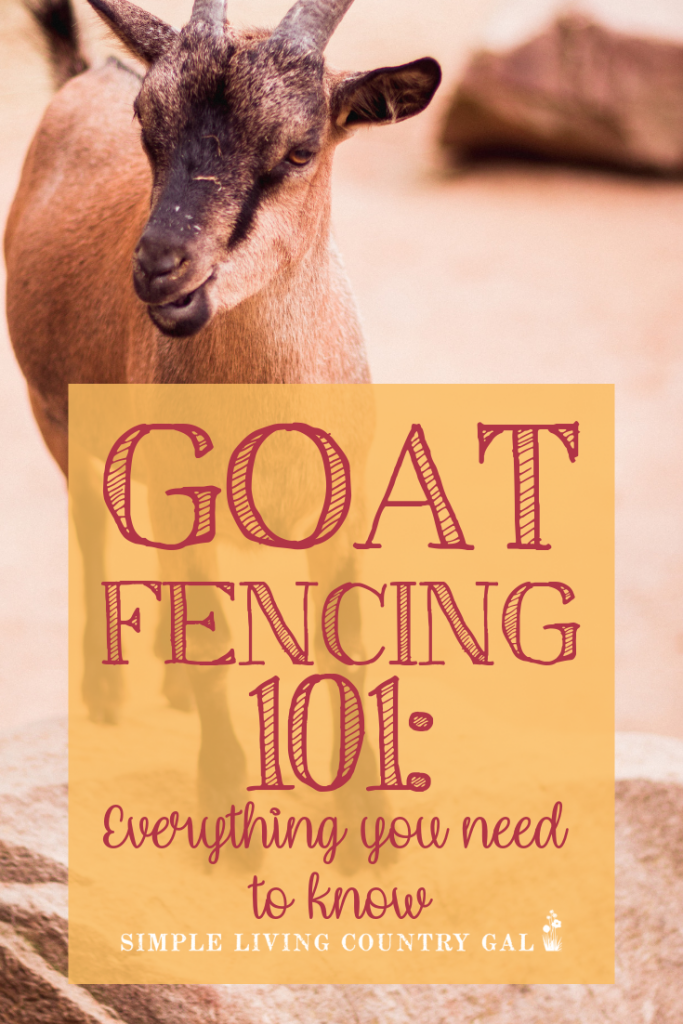
Goat fencing is an important part of owning animals, especially when it comes to goats. Knowing what is out there and what works best in each situation will help you save money and time and keep your animals safe.
What kind of fencing do I need for my goat?
When choosing the best option for fencing your dairy goats, there are three factors to keep in mind.
#1. Budget
Take a look at your finances for homesteading and decide what your budget will be for fencing. This will help you choose an option that fits with what you can afford to invest. Your budget will also determine how much land you will fence in. So, for example, if you have a small budget, then you will want to fence in a small grazing area. The good news is you can always add on to your fence as finances improve.
#2. Herd Size
In a pasture, you will want to have about 200 square feet per goat in your herd. If you have a large herd, you will need to fence in a large grazing area so your goats have plenty of room. You will also want to take into account your plans for growth. If you have eight goats now but hope to have a much larger herd soon, then you total square footage will be much greater.
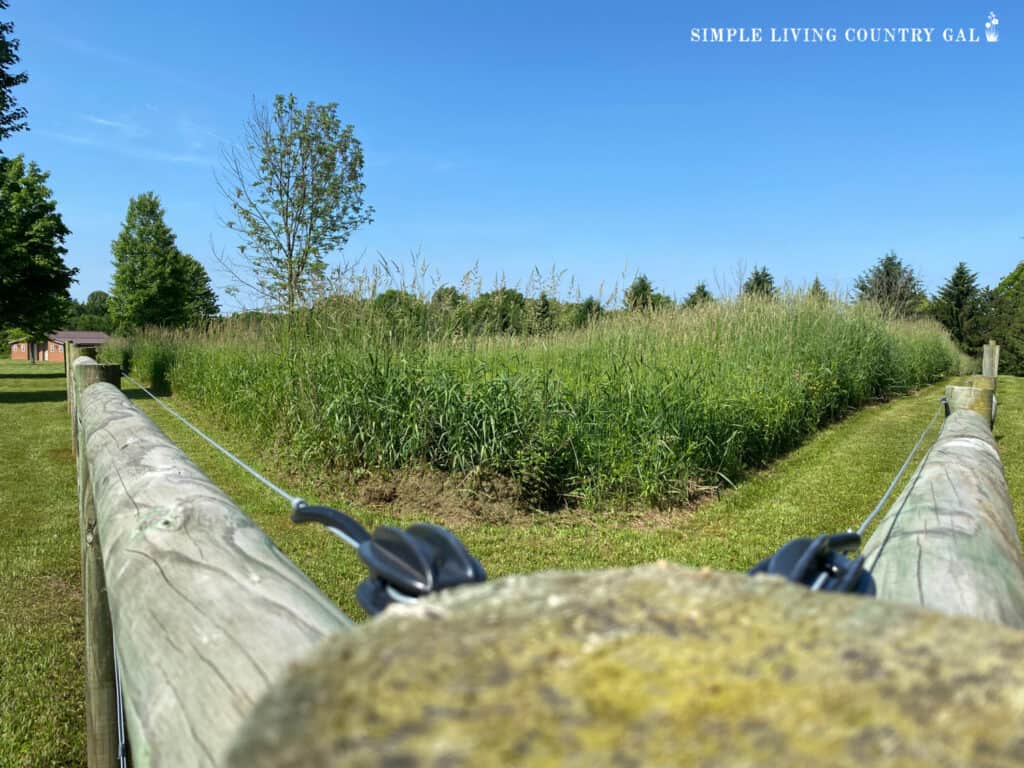
#3. Where You Live
The state of the land where you live plays a large role in the type of fence you plan to invest in. If you live in a wet area, for example, you may want to use a fence that is movable so you can keep your herd on dry ground.
For us, we tried a few different options with our herd. This helped us to know just what would work best for our situation. Use this article to help you choose one to try out with your goats.
Things to Know When Fencing in Goats
Goats are not your typical animal and because of that there are a few things to keep in mind when fencing them in.
Tip#1 – Not all goats want fenced in
Goats are escape artists. Knowing this before you choose a fence will help you to be better prepared for their shenanigans. If they do not want to be fenced in, they will work hard to find a way to get out. Your goal with fencing is to prevent that from day one.
For example….taller is better when it comes to fencing for goats. Goats can jump surprisingly high if they want to, but luckily many will not. Unless they are frightened or feel they are in danger most goats will stay put. In all the years of raising goats, we have only ever had 2 that jumped the fences and in order to keep them in, we doubled the height of our fence. My advice is, if you have a jumper is to do your best to use a setup that will keep everyone in your herd safe.
Tip#2 – Not all goats need fenced in
On the opposite side of the coin, not all goats need to be fenced in. I have a couple of goats that I can let roam around with me while I am working. They are so people-friendly they will stay with me the entire time we are out.
These are my sweet goats that are more like pets than livestock. They have a love for people and just enjoy being with me.
However, if those same goats are in heat or in rut, they act completely different. During breeding season their minds have only one goal, to breed and make baby goats. That means they will do whatever they can to get to a doe.
Tip#3 – Be prepare to change setups
Be flexible. Your first goat fence may not be as effective as you may hope and that means you will have to update or make a change. Remember, the main objective for your animals is to be safe at all times. That means keeping them inside and, at the same time, keeping predators out.
If your first idea doesn’t work as expected, you may need to make adjustments or change things completely. The good news is, there are so many options out there for fencing you can incorporate multiple fences to keep things secure.

SLCG Pro Tip: If you bring in new goats and are worried they will not understand your fence setup, your herd will teach them where the boundaries are. New goats tend to follow the lead of the herd sire and that means if the herd respects your fence setup, there is a good chance that any new goats or kids will respect it as well.
Is there such a thing as escape-proof goat fencing?
You know the saying, the grass is always greener on the other side of the fence? I think that phrase was first said by a farmer with goats.
For some unknown reason, some goats believe the best grass is on the other side of the fence. And because of that they will look for weaknesses in the fence giving them a chance to get out. Check your fence frequently to make sure there are no gaps or cut lines preventing escapes.
You can do this every few weeks. Walk the fence line, no matter what fence option you are using, and check the integrity of the fence. If you find an issue, take care of it right away. It’s important to remember that once goats get out they know it is possible making them a bit harder to contain.
Tip #4 Keep fences maintained
If you use an electric fence, you will need to keep it trimmed and free of long grass. Grass and weeds can interrupt the electricity. Trimming grass should be on your monthly to-do list.
Keeping weeds and grass trimmed from the electric areas will always ensure an effective fence. We have found that weed-whacking the grass down to the ground buys us more time, so we are not trimming things so often.
READ: GOAT FENCING 101. TRIMMING THE FENCE LINE
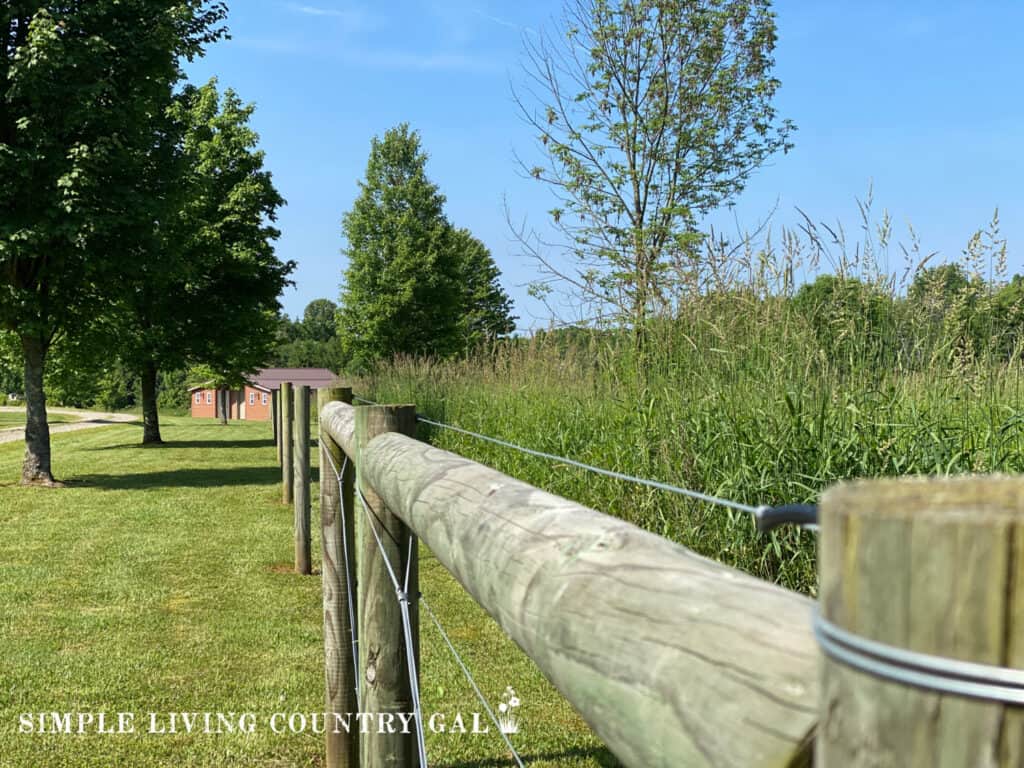
Goat Fencing 101 Our top 3 options
We use all three of these options with our goats and for different reason. Each comes with a pro list and a con list. Read them all over and see which will work best for you.
Fencing Option #1. Steel panels
This type of fencing is a one-piece welded steel panel that comes in sheets that can range in different lengths. These panels are easy to move, are durable, and work well for smaller areas. They are flexible allowing you to make a curved setup which can be useful in small areas.
Steel fencing is somewhat lightweight which means you can set up your fence with little or now help. You can cut steel fence with fence cutters giving you different sizes another reason why we love this option.
SLCG Pro Tip: If you have goats WITH horns you will NOT want to use this option. Goats can easily get those horns stuck in fencing, so unless your steel pannels have very small openings, I would skip this option altogether.
How to Install Steel Panel Fencing
This type of fencing is easy to set up and can be done alone and quickly.
- Using a sledgehammer, drive heavy-duty steel posts into the ground every few feet.
- Attach the steel fence panel to the post using metal zip ties or thick plastic zip ties to hold it in place
- Ensure the stakes are on the outside of the fence panel to ensure you have a sturdier panel.
Metal Zip Ties Heavy Duty, (11.8 inch 100PCS& Tie Cutter) 304 Stainless Steel Zip Ties, Multi-Purpose Self-Locking Cable Ties for Exhaust Wrap, Fence, Automotive Repair


Why do stakes need to be on the outside of a goat fence?
Goats will stand on this type of fence and push with their natural weight simply because they like to be up high. Having the stakes on the outside will give extra support to the overall fence.
Steel Fence Panel Sizes
The most common sizes of panels are:
- Cattle Panels are 4-5′ high by 16′ long.
- Pig Panels are just under 3′ high by 16′ long.
- Goat or Sheep Panels are 4′ high by 16′ long.
Even though there are steel fence panels made specifically for goats, I prefer the taller cattle panels as this size tends to keep my jumpers from attempting to leap over the fence. This size also works well to keep our bucks inside until we are ready to begin breeding.
Another plus to the cattle panels is that the openings on one end are smaller. This keeps our young kids from being able to get out.
SLCG Pro Tip: If you need a taller fencing option and only have the smaller pig or goat panels, you can stack one fence on top of the other and attach them with zip ties making a much taller version. I have done this in several instances on our goat farm, and they hold up surprisingly well.
Where can you buy steel fence panels?
You can purchase steel fence panels at:
- Local feed mill.
- Tractor Supply or other farm store.
- Used on Facebook or Craigslist.
Bottom Line: Steel fence panels are good and inexpensive option that is very sturdy and can be used successfully to keep goats contained. This option also works well for small areas or areas you want to section off inside of a barn or shelter.
Performance Tool M7103 8-Pound Sledge Hammer With Fiberglass Handle


Goat Fencing Option #2. Electric Fence Netting.
Electric fence netting is a woven electric fence that is in a grid like patter. It is a mesh-like material that comes in lengths up to 160′ long. You can connect electric fence netting together giving you a larger fence for a bigger fenced in area.
This is the fencing I started out with, and we are still using the same original fencing 8 years later. It is very easy to set up and works very well to keep our goats fenced in with only one escape over this time.
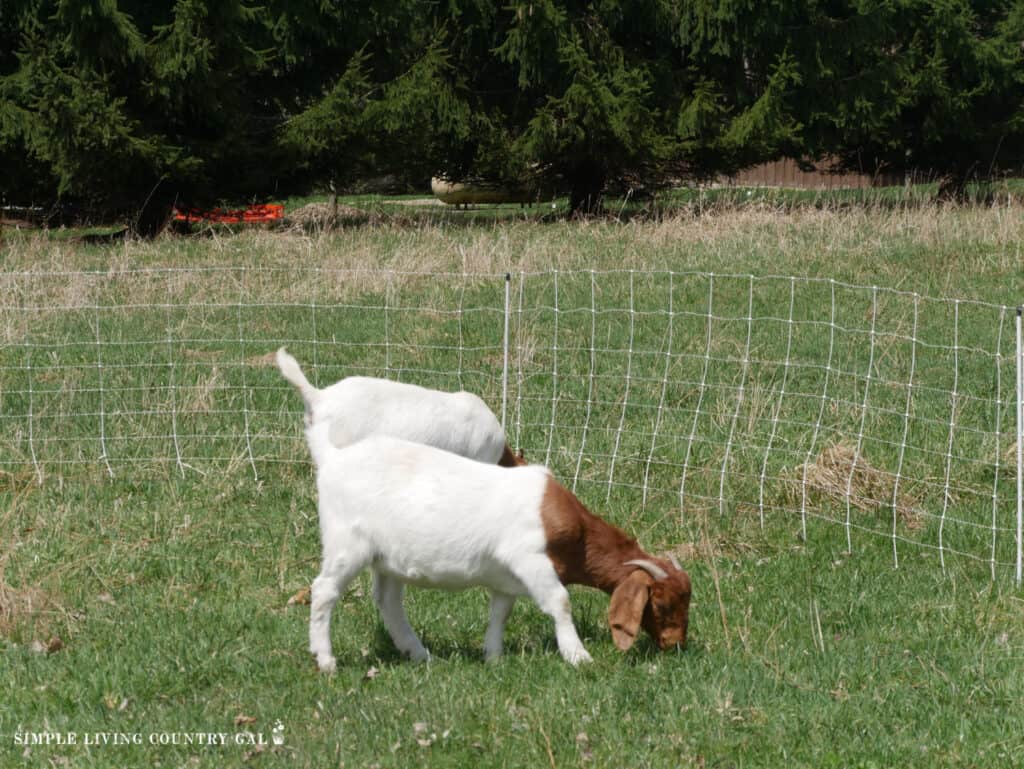
You will need a power sources to make the wires hot. If you do not have a source of electricity, you can also purchase a solar box for fencing. This is not the exact one I used, but it is similar. The solar box attaches to the fence with clips.
Premier 48


This is the older solar box that we are using to keep our fence hot. As I said, even after all these years of rain and heavy snow, it still is working great.
The biggest downside to this type of fence is, you cannot use it year round. If you live in an area that gets heavy snowfall, you will need to store this type of fence away to keep it from getting damaged.
How to store electric fence netting
The trick to storing a fence netting without it getting tangled is easy once you know the trick.
#1. Remove the fence from the ground lying it on the grass in one long piece.
#2. Working at one end, fold the fence using the stakes at each section as your guide.
#3. Lay the fence on top by section like an accordion.
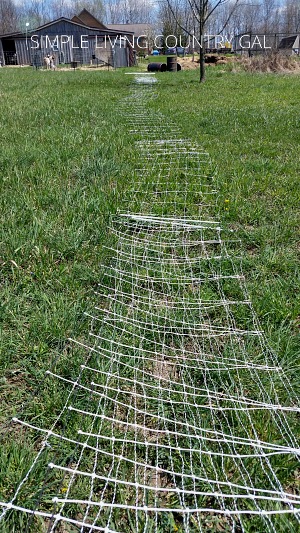
#4. Once done, roll the fence up using a pipe in the center. We use PVC pipe and find it works great.
#5. Use bailer twine to secure the fence around the pipe.
#6. Store until you need it again.
#7. Take the entire roll out to the pasture before you unroll it.
#8. Unroll in one long line where you plan to install the fence.
#9. Install normally and check the fence for any issues before introducing the herd.
If you choose to keep your electric fence netting out year-round, you will want to watch for snow build-up. The weight of the snow can apply pressure to the lower strands that can stretch them out and weaken areas that may allow your goats a way to get out.
This netting option is a bit more expensive than the steel panels, but I believe it is easier to use and more secure at both keeping goats in and predators out. I have even had great luck keeping bucks in rut contained, which is a huge benefit to keep in mind.
This type of fencing is also easier to move than the other options. If you live in a wet area or use rotational grazing, this type of fence is a great option.
How do you train goat kids on electric fence?
Training kids on an electric fence can be scary for owners, but when you understand the purpose and our easy approach to training, it should help to relieve some of your concerns.
- Wait until goat kids are over six weeks of age. This is the time when most kids are weaned and away from their mothers.
- Put them out into the fenced area.
- Allow them to explore the area on their own.
- Supervise to ensure there are no injuries.
- Wait until one or more of the kids get a shock.
For training that sticks, you will want at least one of your goat kids to get zapped. This will teach them to stay away from the fence in the future. Usually, one zap on the nose is all you need to train all your kids that the fence is something to stay away from.
When you have a group of kids, you will find a the bravest kids investigating the fence with their noses. Eventually, they will get a zap on their nose causing them to jump, yelp, and run off in the other direction. This will startle the entire herd letting everyone know the fence is something to stay away from.
A point to remember when training on electric netting is little goat kids are super curious, and sometimes they will try to stick their heads through the electric netting to nibble at the grass on the other side. When this happens, and they start to feel the zap, there is a chance that rather than “pulling back” away from the fence, they will instead jump forward.
If this happens, there is a chance that they can get tangled in the netting. By staying near to the power source when your young kids are out getting trained, you can quickly turn off the power if anyone gets caught or tangled in the fence.
WHEN TO USE ELECTRIC NETTING
I now have several sections of this type of fencing and use in a few different cases throughout our homestead.
- Use it to section off my pasture for rotational grazing.
- To section off overly wet or muddy areas allowing them to dry up and heal.
- Use it to keep bucks in a separate grazing area to reduce the risk of accidental breeding.
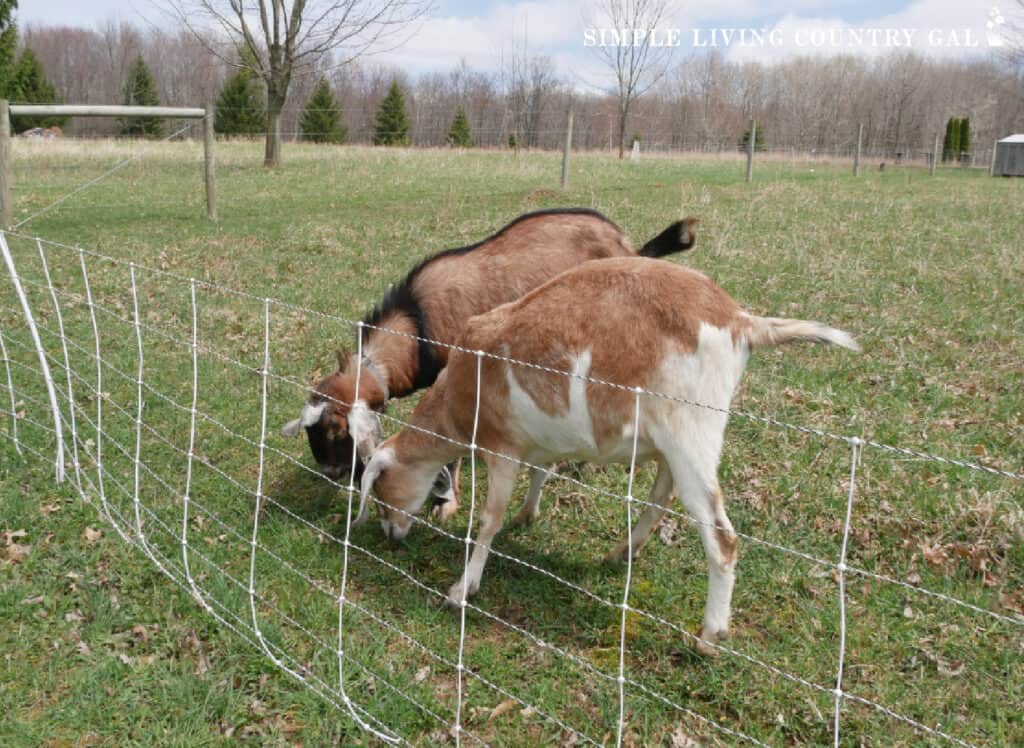
Bottom line: Electrical fence netting is easy to move, works great to keep goats contained and is durable enough to hold up for many years. It is a bit of a cost investment but I feel the cost is worth the added measure of protection.
Goat fencing option #3 High tensile wire.
High-Tensile fencing is a permanent fencing option that consists of large fence posts and tightly strung steel strands, called wires that range from 5-6 or more. The strands are made of high-carbon steel ranging in different content. The higher the carbon content, the stronger the wire will be. Some, ore all of the wires are electrified giving a very secure option for fencing.
This fencing option works well with large sections of pasture and will contain not just goats but a wide range of livestock.
We installed our first high tinsel six years ago, and I am happy with its effectiveness. We paid to have our fence installed to ensure it is done correctly so it is able to withstand our intense winters and snow here in Pennsylvania.
In our area, this type of fencing adds to the value of your home, which is a good thing to keep in mind when deciding.
Can you install high tensile fence yourself?
Yes, you can install high-tensile fencing yourself, but I would not recommend it unless you know what you are doing. There is special equipment needed to ensure the strands are tight and not slacking. If you hire someone to do this fence, be sure they have experience and will come and tighten any strands if they loosen up.
High-tensile fencing needs a large gate to allow moving of livestock and the admittance of any farm equipment. The size of the gate will all depend on what you need to get into your pasture. We have a larger gate so we can get our tractor in and out to work on the field if needed.
At what height should the wires be?
For goats, you will want to have the first strand of wire lower to the ground. This will help to keep the young kids inside where it is safer. Ours is set at 9 inches and this height seems to work well.
You will need to trim the grass under and around the fence to ensure that bottom line stays hot. Grass and weeds can interrupt the current and cause the fence to not be electrified. One a month use a mower or weed whacker to cut the grass down that is under the fence and around the posts.
Bottom line: High Tensile is a good option for permanent fencing that is sound and secure. It will safely house goats, horses, and cows making it a great option for a multi-animal homestead. Even though it is the most costly option, it will add to the value of your home.
So many people have heard stories of goats and how hard they are to contain. Don’t let this rumor deter you from getting your first goats. Yes there are some that will prove hard to keep inside but most will be well behaved. Goats are funny, loving, entertaining, and very rewarding.
The trick to raising goats or any animals for that matter, is to start out small, so you grow with your herd. Do your research so you are not jumping in unprepared, and set your property up so you can house your animals safely and effectively.
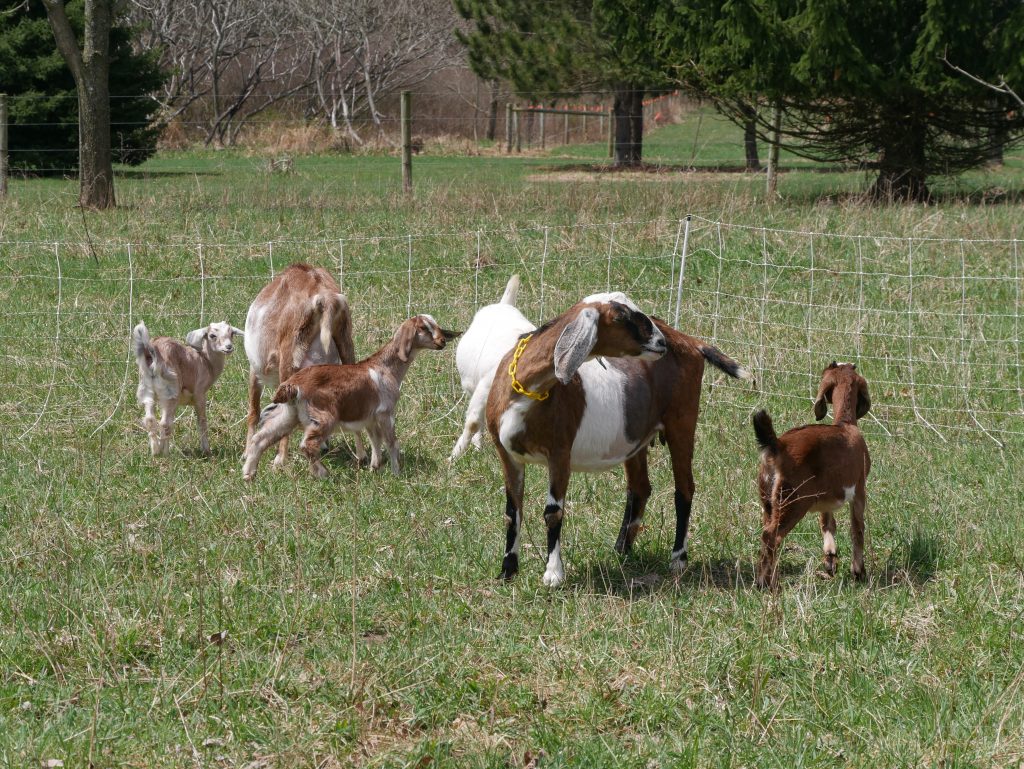
Now that you know the 101 on Goat Fencing you are ready to set up a grazing area for your goat herd to enjoy for years to come.


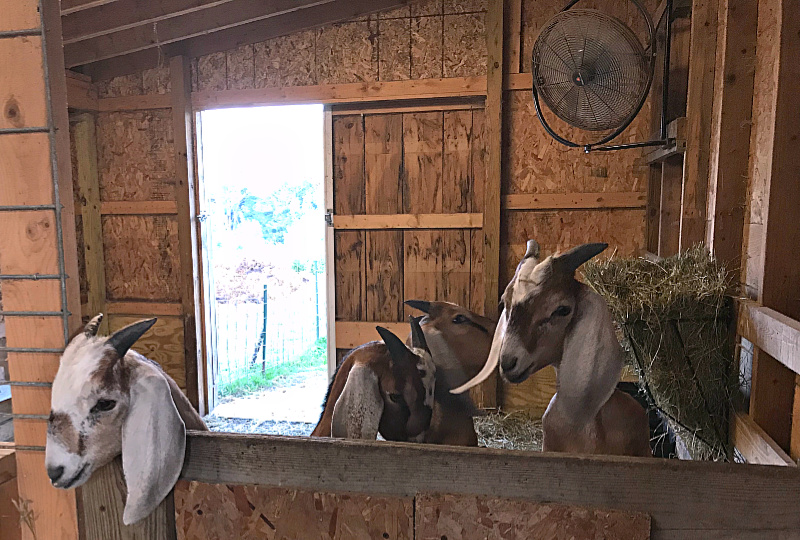




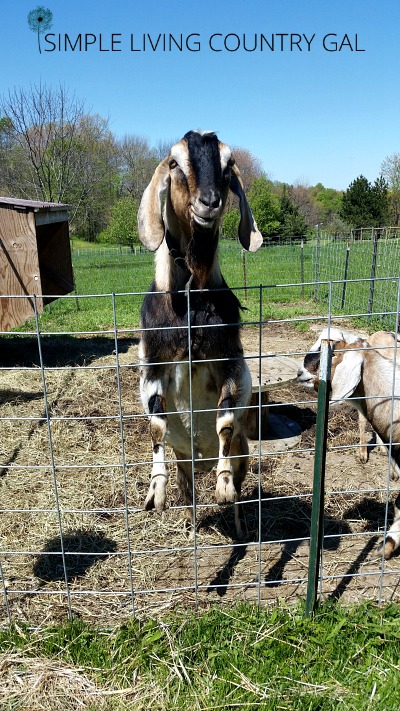
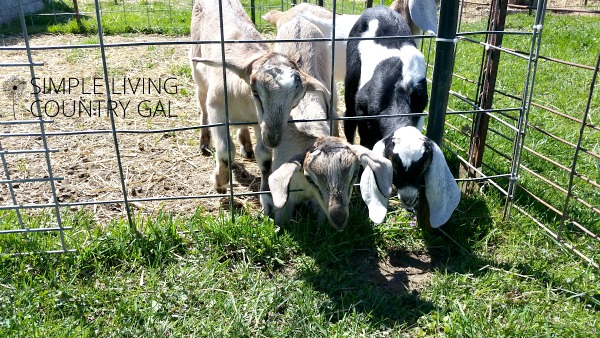
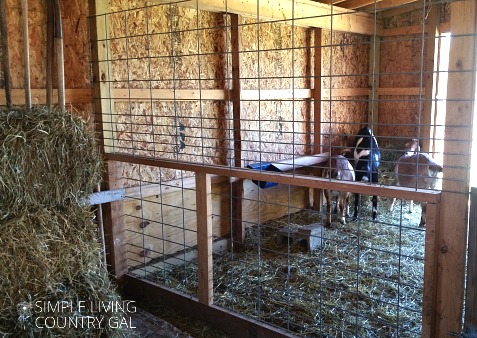








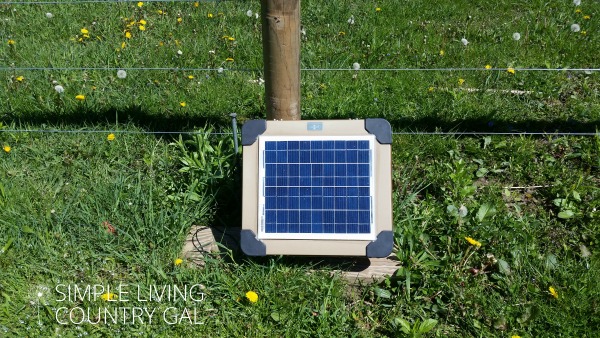
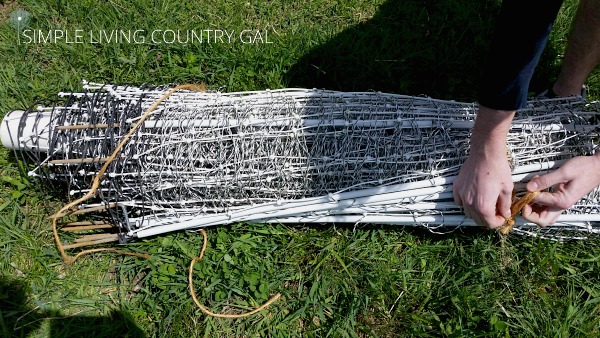
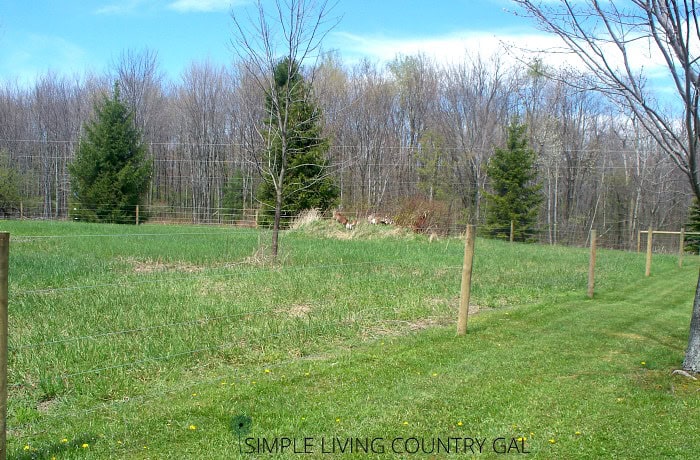
This was a great read and thanks for the information. I just adopted two Nigerian dwarf male goats and now a third! They come next week. I am having a 6’ dog eared fence put around the entire property plus building a goat pen for them when I’m not home. I am using 4×4 poles in cement for my base and 4’ high 1”x2” wire so they don’t get their little horns stuck. I’m trying to make it really cute because it is my backyard .
The electric net fencing is great for cleaning up brushy areas. We use it a lot to clear sections of the property that aren’t fenced but could use a good trimming. However, one of our goats thinks nothing of popping out to get to that green grass on the other side. She is also the reason I have heavy 4′ high woven wire goat fencing and a top hot wire around my main pasture. That top hot wire would be my one additional tip, it will keep them from climbing the fences too much and keep a bouncy goat in.
That is a great tip!!!